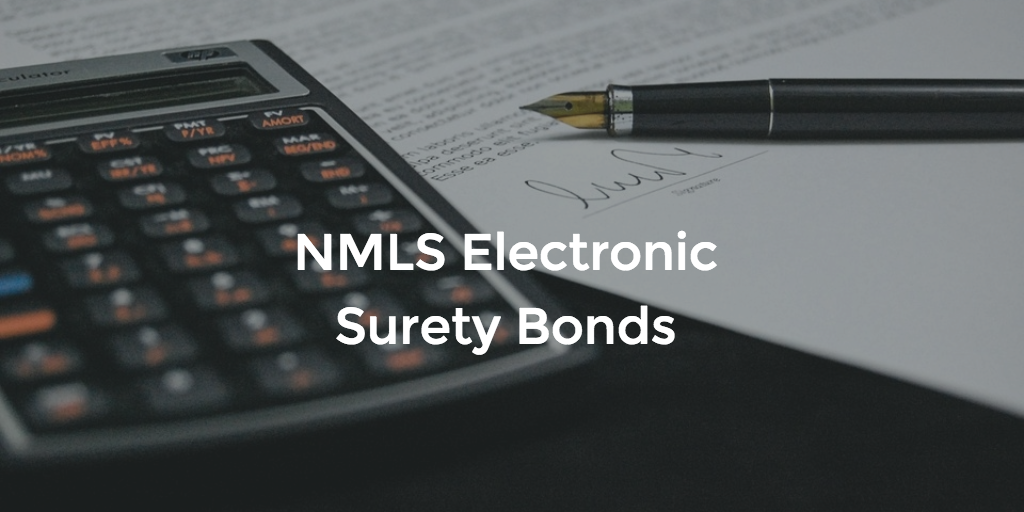A number of professionals in the financial field across the U.S. undergo their required licensing procedure via the National Multistate Licensing System and Registry (NMLS). As the NMLS is introducing a new system for submitting and managing surety bond requirements, it’s important for businesses to get acquainted with the electronic surety bond (ESB).
The new method for collecting and storing surety bonds is effective for licensees as of September 12, 2016. The first phase was rolled out in January 2016 and affected surety bond producers and surety companies.
By using electronic surety bonds, the NMLS aims to make the licensing and bonding process smoother for all parties involved. The new system allows for online submission of required bonds by licensees and their surety providers, plus electronic bond issuance and monitoring for relevant authorities.
Let’s look at the basics of the new ESB system and the changes that licensees should be aware of.
The rationale for electronic surety bonds
The NMLS manages the licensing procedure for a number of professions across the country. In many cases, state authorities ask licensees to obtain surety bonds in order to be granted the right to operate. As of 2014, 177 licensing bodies required bonding.
The new electronic system for submission and management of NMLS surety bonds aims to speed up the process for licensees, surety underwriters, and state authorities alike. By being able to submit and track all bonding online, all parties would have easier access and better information.
The NMLS also seeks to serve as a complete database for all licensing information, so electronic management of surety bonds is a step in this direction.
States and industries affected by the change
Until now, nine states have moved to the ESB system, including Texas, Washington, Idaho, Wyoming, Iowa, Wisconsin, Vermont, Massachusetts and Indiana. While the idea is to convert all states, it is not yet clear whether and when this would be realized.
In Idaho, collection agencies need to start using the new system by March 15, 2017. Debt management companies, exempt companies, first lien mortgage lenders, money transmitters, and subordinate lien mortgage lenders in Indiana have to comply with the changes by the end of 2016. The same deadline applies for closing agents, debt management companies, exempt companies, money servicers, mortgage bankers, and mortgage brokers in Iowa.
In Massachusetts, check sellers, debt collectors, and foreign transmittal agencies have to convert to ESB by December 15, 2016. Mortgage brokers, mortgage lenders and exempt companies have to comply by the end of 2016. All new licensees had to meet the NMLS surety bond requirements via the electronic system as of September 12.
Money transmitters in Texas do not have an obligation to use ESBs, but are encouraged to do so.
In Vermont, debt adjusters, money transmitters, and litigation funding companies need to adopt the new system by November 1, 2016. Lenders, loan servicers, and mortgage brokers have to move to ESBs by June 30, 2017. All types of new licensees have started using the online system as of September 12.
Mortgage brokers in Washington will need to adopt ESBs by the end of 2017. As for mortgage brokers and mortgage bankers in Wisconsin, the deadline is September 1, 2017. Finally, in Wyoming, by June 30, 2017, all exempt companies, money transmitters, mortgage brokers, and mortgage lenders will have to use ESBs.
What’s changing for you as a licensee
While the NMLS surety bond requirements are not changing, complying with licensing rules for certain licensees in the above-mentioned states and license types will happen by using ESBs.
In essence, this means the next time you obtain or renew your surety bond you will have to submit it online via the NMLS website. Surety bonds on paper will not be accepted, so you won’t need to print your bond and send it to the state authority via post. Instead, bonds will be uploaded to the online NMLS system, where all involved parties would be able to track deadlines and monitor compliance.
What are your thoughts on NMLS’s electronic surety bonds? Do you think they are going to make the bonding process easier? Please share your thoughts in the comments below.
Vic Lance is the founder and president of Lance Surety Bond Associates, Inc.



 USDA to Reinstate Fired Workers After Federal Board Ruling
USDA to Reinstate Fired Workers After Federal Board Ruling  Rodrigo Duterte’s Flight to ICC Delayed, Stops in Dubai for Medical Check
Rodrigo Duterte’s Flight to ICC Delayed, Stops in Dubai for Medical Check  Rodrigo Duterte Arrested: Former Philippine President Faces ICC Charges
Rodrigo Duterte Arrested: Former Philippine President Faces ICC Charges  South Korean President Yoon Walks Free as Arrest Warrant Canceled Amid Political Turmoil
South Korean President Yoon Walks Free as Arrest Warrant Canceled Amid Political Turmoil  Sara Duterte Travels to Netherlands Following Father’s Arrest in Manila
Sara Duterte Travels to Netherlands Following Father’s Arrest in Manila  Trump’s Executive Order Targets Lawsuits Blocking His Policies
Trump’s Executive Order Targets Lawsuits Blocking His Policies  Newsmax Pays $40M to Settle Smartmatic Defamation Lawsuit
Newsmax Pays $40M to Settle Smartmatic Defamation Lawsuit  South Korean President Yoon Suk Yeol Walks Free Amid Ongoing Impeachment Battle
South Korean President Yoon Suk Yeol Walks Free Amid Ongoing Impeachment Battle  CFPB Faces Legal Challenge Over Work Halt, Resumes Key Operations
CFPB Faces Legal Challenge Over Work Halt, Resumes Key Operations  FTC Moves to Block Surmodics-GTCR Merger Over Healthcare Cost Concerns
FTC Moves to Block Surmodics-GTCR Merger Over Healthcare Cost Concerns  Trump Signals End to U.S. Intelligence Freeze on Ukraine, Eyes Progress in Peace Talks
Trump Signals End to U.S. Intelligence Freeze on Ukraine, Eyes Progress in Peace Talks  Trump’s Former Lawyer Todd Blanche Confirmed as Deputy Attorney General in Controversial Vote
Trump’s Former Lawyer Todd Blanche Confirmed as Deputy Attorney General in Controversial Vote  Former Philippine President Rodrigo Duterte Arrested at Manila Airport Under ICC Warrant
Former Philippine President Rodrigo Duterte Arrested at Manila Airport Under ICC Warrant  South Korean Prosecutors Push for Yoon Suk Yeol’s Conviction Despite Court Ruling
South Korean Prosecutors Push for Yoon Suk Yeol’s Conviction Despite Court Ruling  Diplomats Protest USAID Shutdown, Warn of Global Security Risks
Diplomats Protest USAID Shutdown, Warn of Global Security Risks  U.S. Judges Face Rising Threats Amid Impeachment Concerns
U.S. Judges Face Rising Threats Amid Impeachment Concerns 
































